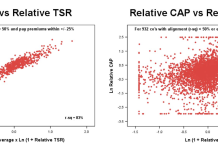How do we generate resilient revenue during pandemics and periods of inflation? The answer lies in rethinking revenue planning and attaining the right technology
CFOs, investors and business leaders alike are facing some extreme bouts of volatility from the pandemic through to record inflation, conflict and warfare. Inflation in the UK has reached a 40-year high, hitting 9.4% in June and the economic fallout from Brexit is beginning to bite, hard. Business and consumer confidence is dwindling, and productivity is on the decline. Resilient revenue streams are more important than ever.
Some industries, such as software and technology, that have traditionally been rewarded for rapid growth are now some of the most vulnerable to devaluation as spending slows. Some companies will thrive, many will shrink, and others will disappear entirely. The difference will be in the business decisions that executive teams and leaders make in the coming months.
Growth versus profits
Unsurprisingly, many investors and corporate boards are diverting all of their focus to profits. The challenge that many executive teams now face is that the growth models with which they’ve run their businesses on, don’t work in a shrinking economy. Amongst these executive teams, there’s been a shift from top-line growth plans to protecting the bottom line.
This is acutely more apparent in the sales function. Chief Revenue Officers (CROs) are being tasked with generating more revenue when people are in fact buying less, and commodity pricing continue to increase. Organisations’ expansion plans or the addition of resources to overcome inefficiencies are being deprioritised, as organisations work to claw back profit margins. This challenge has been exacerbated by the Great Resignation, which exposed industries to talent shortages, created a tremendous amount of competition for that top-talent, and drove up wages. So, what can business leaders do to navigate this economic adversity and generate predictable, profitable and resilient revenue?
Rethinking revenue planning
Transforming the way that they plan and structure their revenue operations should be at the top of CEOs and business leaders’ lists. This will enable them to rapidly make the operational shift from inefficient practices implemented to support rapid growth, to highly efficient practices designed to maximise the productivity of their revenue organisation. And they must do so with agility in mind, as it is clear that there are more challenges ahead for resilient revenue.
Finance teams have historically been forced to calculate accruals, future cash positions, and expected sales commissions payments manually, using static data exported from disparate systems. Deals in the pipeline frequently move in and out of the forecast, making it hard to predict sales bookings and associated commissions. Without a direct connection between always-current pipeline data and actual commission plan structure, these manual calculations were outdated the moment they were complete.
The role of AI and data
With the right technology in place, revenue planning becomes more accurate, informed and agile. Planning analysis is where decision-making begins by leveraging artificial intelligence (AI) to predict key metrics, including optimised territories for growth, productivity targets and seasonality in sales. By proactively monitoring these key metrics, organisations are able to continuously improve sales plans and account for attrition, market changes and other unexpected things that require a course correction.
Effective data analytics and AI can offer organisations a plethora of predictive insights including offering up recommendations on which deals to prioritise that are most likely to close, increasing forecasting accuracy, and continuously informing planning. Leveraging the same data that CROs and sales leaders use to forecast expected sales for both current and future financial periods means that finance teams can reliably predict future payments. AI-powered automated forecasting gives revenue leaders the power to spot deal health problems early, identify opportunities to fill those gaps should deals slip as well as find the upward trajectory deals that can make the difference between a good quarter and a great one. With this level of automation, projections can quickly be updated as often as desired, substantially reducing the risk of being surprised by unexpected expenses and outgoings or deals that don’t cross the finish line.
It’s safe to say that degrees of volatility in the economy is here to stay and businesses need to be prepared to navigate those accordingly. The manual ways that finance teams and executive leadership have been planning and forecasting revenue are no longer fit for purpose and can’t keep up with the myriad number of changes in the market. With AI, automation and predictive analytics, these teams can keep pace with what’s required, strengthen their teams and protect the bottom line.
This piece was provided and written by Chris Cabrera, Founder and CEO at Xactly.











